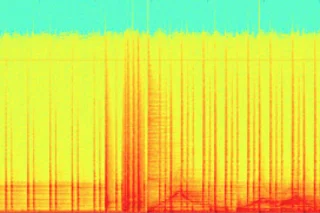By breaking down Ray Charles’s rendition of Fever, Southern Oregon University information scientist and music aficionado Ken Lindsay discovered a remarkably rigorous bit of rhythm: Charles’s finger snaps set the main beat with an accuracy of two and a half milliseconds—half the time it takes a honeybee to flap its wings once. “That precision gives the song its amazingly tight swing,” says Lindsay. “His ability to control rhythm was incredible.” To capture Charles’s rhythm, Lindsay wrote a computer program that isolates instruments by frequency and displays their activity as spectrograms (right). By comparing such multicolored arrays, he was then able to plot a song’s notes into a map by the frequency, intensity, and time each note was played—the musical equivalent of a fingerprint. “A lot of the time, musicians don’t write down what they’re playing,” Lindsay says. “This is a way to capture the subtleties.”

Newsletter
Sign up for our email newsletter for the latest science news
Published in:
More on Discover
Stay Curious
SubscribeTo The Magazine
Save up to 40% off the cover price when you subscribe to Discover magazine.
Subscribe













